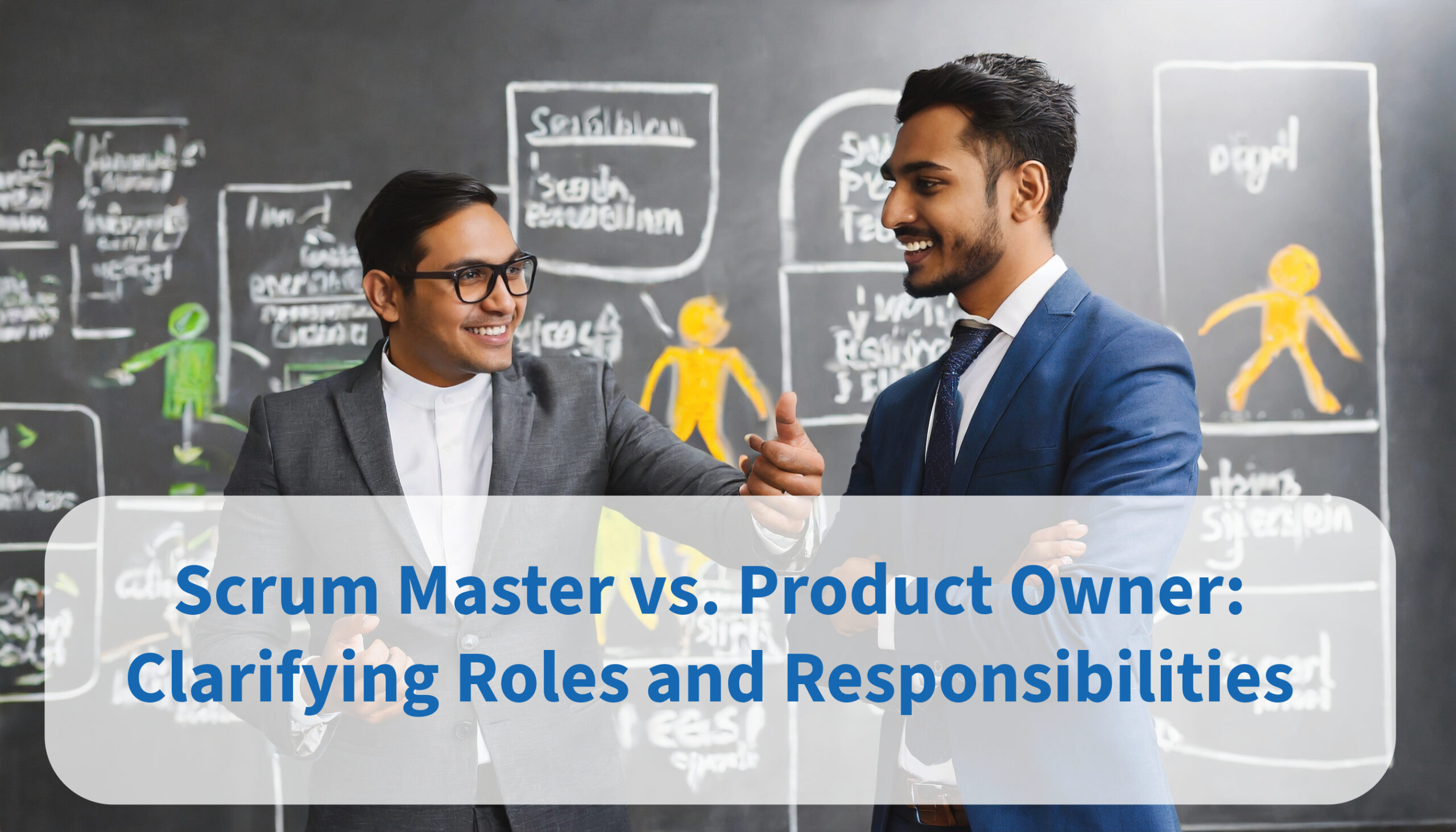Vatsal Shah
Certified ScrumMaster® | Agile Technical Project Manager
Scrum Master vs. Product Owner: Clarifying Roles and Responsibilities

Introduction:
In the world of Agile and Scrum, effective collaboration and clear role definitions are essential for successful project delivery. Two pivotal roles, the Scrum Master and the Product Owner, are often central to the process, yet their responsibilities and functions can be muddled or misconstrued. In this article, we’ll clarify and demystify the roles and responsibilities of the Scrum Master and the Product Owner, ensuring a better understanding of their unique contributions to Agile projects.
The Scrum Master:
- Servant Leader:The Scrum Master is a servant leader, dedicated to the team’s success. They remove impediments, facilitate meetings, and ensure the team follows Agile and Scrum principles.
- Coach and Mentor:Scrum Masters coach and mentor the team, helping them understand and apply Scrum practices. They foster a culture of continuous improvement.
- Team Advocate:They are the team’s advocate, working to protect them from external disruptions and ensuring they have the resources they need.
The Product Owner:
- Visionary and Decision-Maker:The Product Owner is the visionary who defines the product’s goals and objectives. They make critical decisions regarding the product’s features and release schedules.
- Stakeholder Liaison:Product Owners engage with stakeholders, gather requirements, and communicate the product’s progress and priorities to ensure alignment with business goals.
- Backlog Curator:They maintain and prioritize the product backlog, ensuring the team works on the most valuable items first.

Collaboration and Boundaries:
- Collaboration:The Scrum Master and Product Owner collaborate closely but have distinct focuses. They work together to help the team achieve the Sprint goals and deliver value.
- Boundaries:While the Scrum Master and Product Owner collaborate, it’s crucial to maintain the separation of their roles. The Product Owner defines what to build, and the Scrum Master helps the team build it effectively.

Success Factors:
- Scrum Master’s Success:A successful Scrum Master fosters team self-organization, facilitates Scrum events, and ensures the team’s adherence to Agile principles.
- Product Owner’s Success:A successful Product Owner is skilled at backlog management, has a clear product vision, and effectively communicates with stakeholders.

Conclusion:
In the world of Scrum, clarity in role definitions is vital for seamless collaboration and project success. The Scrum Master and Product Owner play complementary yet distinct roles, each contributing unique value to Agile projects. While the Scrum Master serves as a servant leader and team facilitator, the Product Owner acts as the visionary and decision-maker for the product. Collaboration between these roles is essential, but so is maintaining their boundaries to ensure that both can fulfill their duties effectively. By clarifying and understanding these roles, Agile teams can operate more efficiently, delivering value to their customers while fostering a culture of continuous improvement and innovation.
